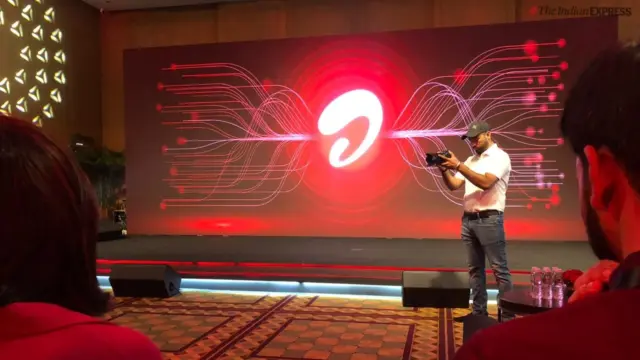
In a significant stride towards bolstering its digital infrastructure, India has officially welcomed the landing of the 2Africa Pearls subsea internet cable, with Bharti Airtel (“Airtel”), one of the nation’s leading telecommunications service providers, acting as the landing partner. This monumental achievement marks a crucial step in the completion of the 2Africa cable system, poised to become the world’s longest subsea cable, stretching an impressive 45,000 kilometers and connecting Asia, Africa, and Europe through the Middle East.
The landing of the 2Africa Pearls cable in India signifies more than just an infrastructural upgrade; it represents a commitment to India’s burgeoning digital ambitions and a future where high-speed, reliable internet connectivity is not just a luxury but a fundamental necessity. This development comes at a time when India’s digital landscape is experiencing unprecedented growth, with increasing demands for data consumption, cloud services, and seamless online experiences.
What is the 2Africa Cable System?
The 2Africa cable system is an ambitious project spearheaded by a consortium of global telecom giants, including Bayobab, center3, China Mobile International, Meta, Orange, Telecom Egypt, Vodafone Group, and WIOCC. Alcatel Submarine Networks is responsible for the intricate task of manufacturing and installing this colossal underwater network. The sheer scale of the project, spanning three continents, underscores the collaborative effort and the immense potential it holds for global connectivity.
Airtel’s Pivotal Role as Landing Partner
Airtel’s role as the landing partner for the 2Africa Pearls cable in India is a testament to its commitment to strengthening the nation’s digital backbone. Sharat Sinha, Director & CEO – Airtel Business, expressed his enthusiasm, stating, “We are thrilled to bring the 2Africa Pearls cable to India adding to our network resilience. We are aggressively diversifying our global network and recently landed the SEA-WE-ME-6 cable in Chennai and Mumbai. We will continue investing in global cable systems and future-proof our network with an aim to deliver high uptime, reliability, and superior quality network to our customers.”
This landing is not an isolated event for Airtel. The company has been strategically investing in global cable systems to enhance its network capabilities. Their existing portfolio includes investments in 34 cables globally, with recent additions like the Southeast Asia-Japan Cable 2 (SJC2) and Equiano. Furthermore, Airtel’s global subsea network investments encompass major cable systems such as the i2i Cable Network, Europe India Gateway (EIG), IMEWE, SEA-ME-WE-4, AAG, Unity, EASSy, Gulf Bridge International (GBI), and the Middle East North Africa Submarine Cable (MENA).
Unprecedented Capacity for India’s Digital Future
The 2Africa Pearls cable brings an astounding capacity of over 100 terabits per second (Tbps) of international bandwidth to India. This massive infusion of capacity will significantly enhance the speed and reliability of internet services across the country. As India continues its journey towards becoming a digitally empowered nation, such infrastructure upgrades are crucial for supporting the ever-increasing demands of its digital economy.
The benefits of this enhanced connectivity are far-reaching. Businesses will experience improved efficiency and productivity through faster data transfer and seamless communication with global partners. Consumers will enjoy enhanced online experiences, including smoother streaming, faster downloads, and more reliable access to cloud-based services. This development will also pave the way for advancements in emerging technologies like 5G, artificial intelligence, and the Internet of Things, which rely heavily on robust and high-capacity network infrastructure.
Diversifying and Strengthening India’s Global Network
Airtel’s investment in the 2Africa Pearls cable aligns with its strategy of aggressively diversifying its global network. By establishing multiple points of connectivity across different subsea cable systems, Airtel aims to enhance network resilience and minimize disruptions. The recent landing of the SEA-ME-WE-6 cable in Chennai and Mumbai further underscores this commitment. These strategic investments ensure that India remains well-connected to the rest of the world, facilitating seamless data flow and supporting the country’s growing role in the global digital landscape.
The Significance of Subsea Cables for Internet Infrastructure
Subsea cables form the backbone of the global internet, carrying the vast majority of international data traffic. Despite advancements in wireless and satellite technologies, undersea cables remain the most efficient and cost-effective method for transmitting large volumes of data across continents. These cables, often containing multiple optical fibers thinner than a human hair, utilize fiber-optic technology to transmit data at incredibly high speeds.
The landing stations, where these subsea cables connect with terrestrial networks, are critical infrastructure points. India currently has around 17 subsea cables landing at 14 distinct cable landing stations across five cities: Mumbai, Chennai, Kochi, Thoothukudi, and Thiruvananthapuram. The addition of the 2Africa Pearls cable will further strengthen this infrastructure, providing increased redundancy and capacity.
The landing of the 2Africa Pearls cable is a momentous occasion for India’s digital ecosystem. It signifies a major step towards realizing the vision of a truly connected and digitally empowered nation. With increased bandwidth, improved reliability, and enhanced network resilience, India is better positioned to embrace the opportunities of the digital age, fostering economic growth, innovation, and social development.
This investment by Airtel, in collaboration with global partners, reflects a shared understanding of the critical role that robust internet infrastructure plays in the modern world. As India continues its rapid digital transformation, initiatives like the 2Africa cable system will be instrumental in ensuring that the country remains at the forefront of the global digital revolution. The future of India’s digital landscape looks brighter and more connected than ever before, thanks to this significant underwater artery of the internet.


















